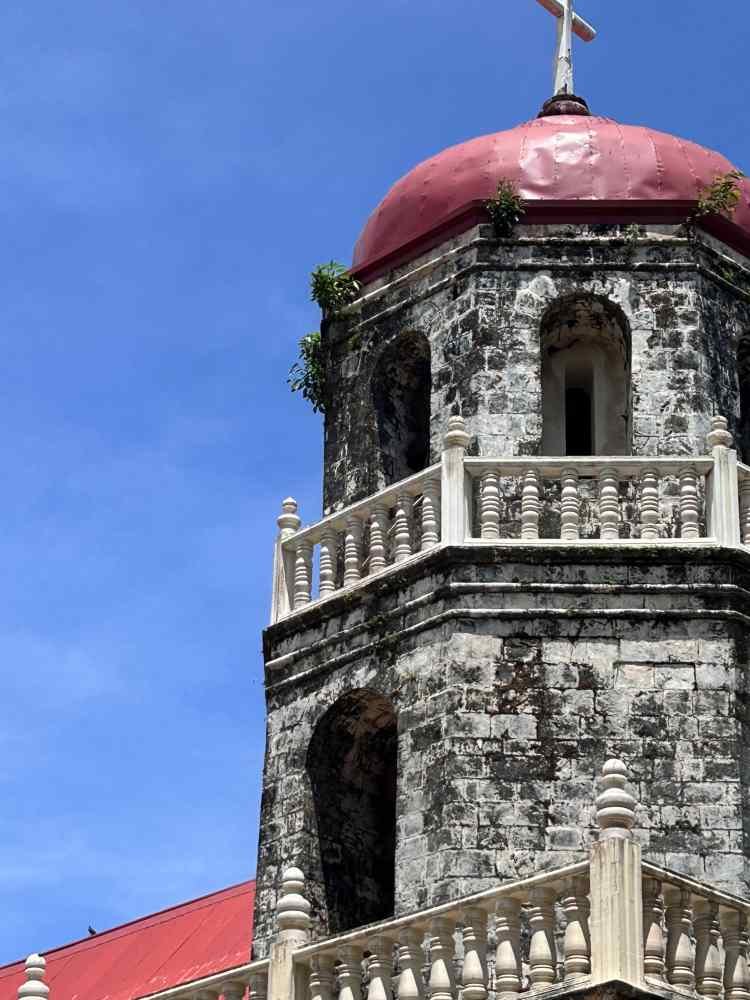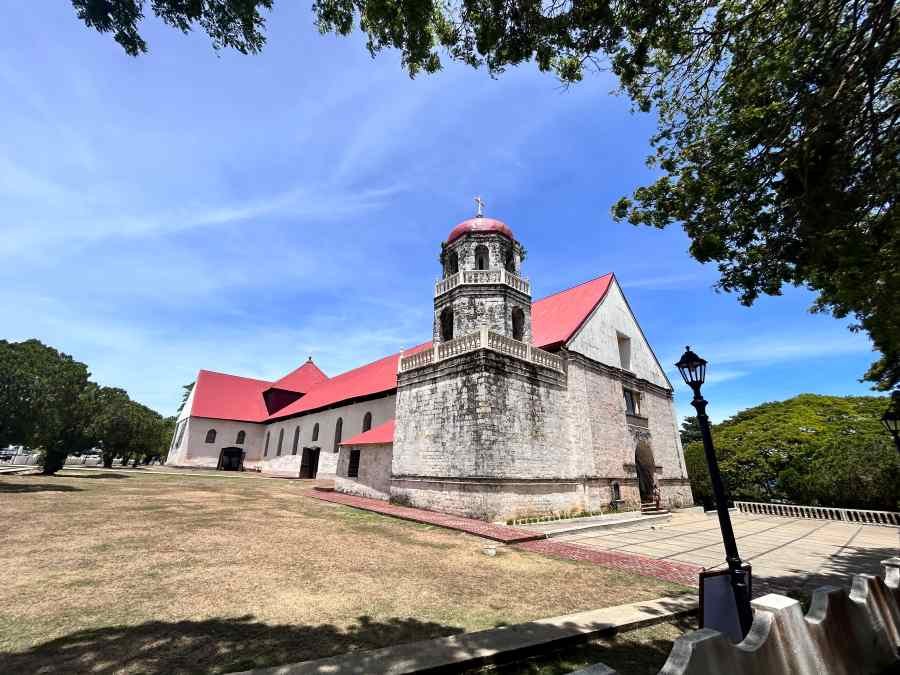
Lazi Church, Siquijor
Table of Contents
A Return to Lazi Church: Rediscovering Siquijor’s Timeless Treasure with Friends
There’s a unique magic in returning to a place that once left a mark on your heart. My recent visit to Lazi Church in Siquijor was exactly that—a journey back in time, but this time, I was not alone. I was joined by friends Engiemar Tupas, Ariel Maglalang, and Lei Lani Dusaban.
Years ago, I explored this historic site solo, wandering through its hallowed halls and the grand convent across the street, soaking in their silent stories. This revisit, with friends by my side, brought new laughter, fresh perspectives, and a deeper appreciation for this national treasure.

The Enduring Legacy of Lazi Church
Lazi Church, officially known as the San Isidro Labrador Parish Church, stands as one of the oldest and most significant churches in the Philippines. The parish was established in 1857, and the current stone church was completed in 1884 under the guidance of Fr. Toribio Sanchez, an Augustinian Recollect priest. The adjacent bell tower was finished in 1885, and the massive convent—one of the largest in Asia—was completed in 1891.
The church has witnessed pivotal moments in Philippine history, including the Philippine Revolution and the American colonial period. It served as a sanctuary for locals during times of conflict and has been a steadfast symbol of faith and community. Recognized as a National Historical Landmark in 1984 and a National Cultural Treasure in 2001, the Lazi Church is also on the tentative list for UNESCO World Heritage Sites, underscoring its significance in the country’s cultural heritage.

Architectural Marvels: Coral Stones, Hardwood, and Baroque Grandeur
Approaching Lazi Church, I was once again struck by its imposing yet graceful Baroque and Neoclassical façade, crafted from hand-cut coral stones and hardwood. The walls are made of stone blocks sourced from surrounding coral gardens, while the pediment is constructed from wood. The church’s neoclassical style is evident in its symmetry, twin pulpits, and the original retablo that still graces the altar. Inside, sunlight streams through stained-glass windows, illuminating the beautifully painted ceilings and the well-preserved wooden floorings arranged in a herringbone pattern—a detail that always catches my eye.
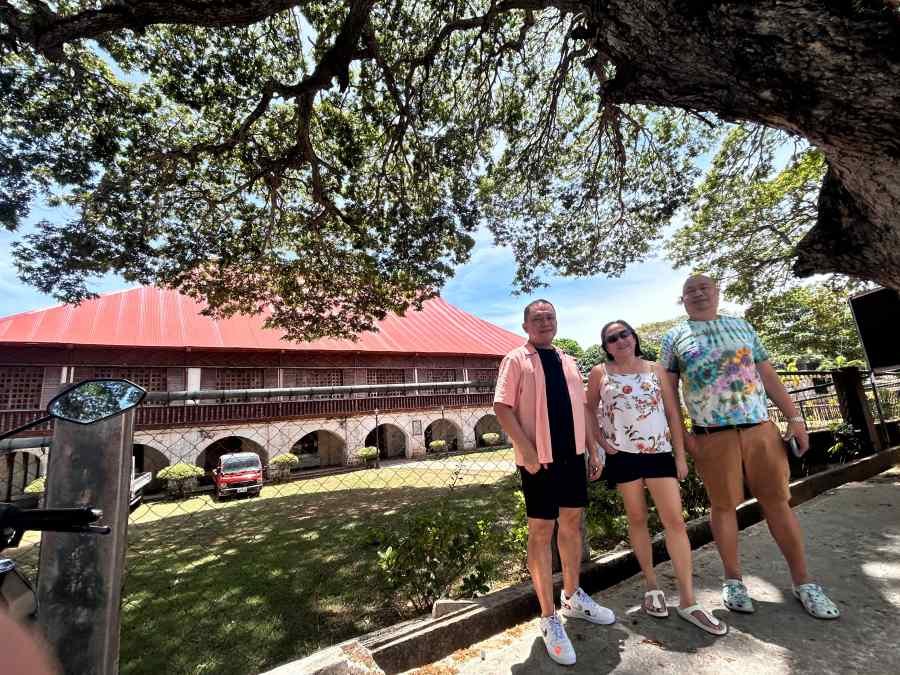
the author, Lei Lani and Engiemar
Across the street, the Lazi Convent commands attention with its U-shaped Bahay na Bato design. The ground floor’s meter-thick coral stone walls exude strength, while the upper story’s hardwood panels and log posts speak of both durability and artistry. Measuring 42 by 38 meters, this convent was once a retreat for priests and now houses the Siquijor Heritage Museum, where relics and manuscripts tell stories of faith and resilience. The convent is considered the largest of its kind in the Visayas region and is a testament to the craftsmanship of Filipino artisans.
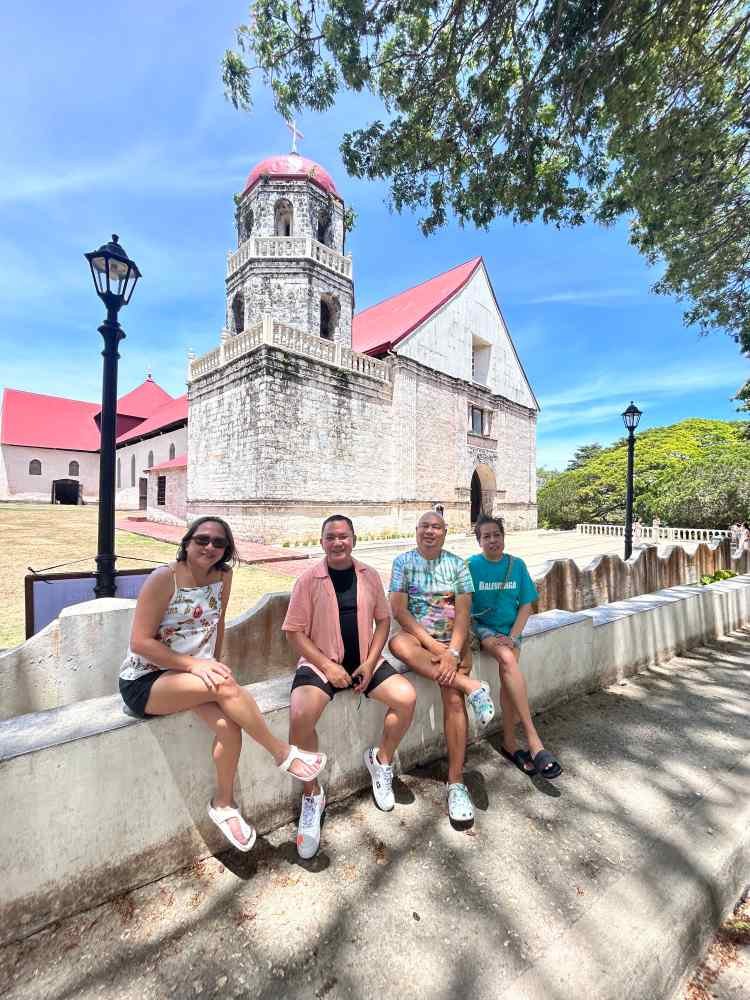
Lei Lani , the author , Engiemar Tupas and Atty. Ariel Maglalang
A Journey Shared: Exploring with Friends
Traveling with Engiemar, Ariel, and Lei Lani transformed my experience. We marveled together at the intricate carvings on the church’s pediment, took countless photos under the shade of ancient acacia trees, and exchanged stories about the Spanish colonial influence that shaped these structures. The laughter echoed in the cavernous halls of the convent, and we lingered over displays in the museum, each artifact sparking conversation and curiosity.
Having visited these sites alone before, I noticed new details this time—perhaps pointed out by a friend or revealed in the joy of shared discovery. The peaceful grounds, the gentle hum of local life, and the reverence of parishioners reminded us that Lazi Church is not just a relic, but a vibrant part of the community.

Travel Tips for Visiting Lazi Church and Convent
If you’re planning your pilgrimage to this Siquijor gem, here are some tips from my recent trip:
-
The best time to visit is during the dry season, from November to May, when the weather is most pleasant for sightseeing. Early mornings or late afternoons offer cooler temperatures and softer light, making them ideal for photography.
-
Getting There: Lazi is about 32 kilometers from Siquijor’s provincial capital. From Dumaguete, take a ferry to Siquijor Island, then travel by bus, van, or rented scooter for flexibility and ease.
-
What to Bring: Comfortable shoes for exploring, a hat or umbrella for shade, and a camera to capture the stunning architecture and serene atmosphere.
-
What to Do: Don’t miss the Siquijor Heritage Museum inside the convent, where you’ll find religious relics and historical artifacts. Take time to sit quietly in the church and appreciate its artistry and tranquility.
-
Nearby Attractions: Combine your visit with a trip to Cambugahay Falls or the Old Enchanted Balete Tree for a full day of Siquijor’s natural and cultural wonders.
Why Lazi Church Belongs on Every Traveler’s List
Lazi Church and its convent are more than just historical landmarks—they are windows into the soul of Siquijor. The fusion of coral stone and hardwood, echoing the Spanish colonial history, and the living faith of the community make this site a must-see for anyone interested in architecture, history, or the enduring power of tradition.
Returning with friends reminded me that travel is not just about places, but about the people we share them with. Whether you visit solo, as I did before, or with companions, Lazi Church promises an experience that is both deeply personal and universally inspiring.
If you find yourself on the mystical island of Siquijor, make your way to Lazi. Stand before its grand façade, walk the cool halls of the convent, and let the stories of the past—and the laughter of the present—become part of your journey.
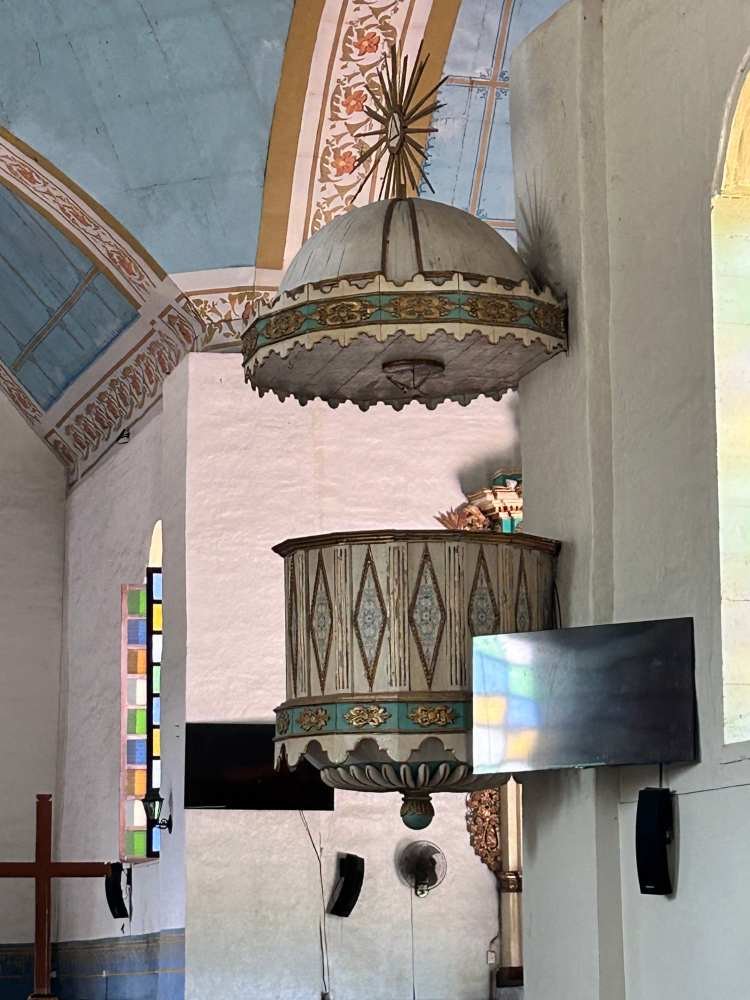
References
- National Museum of the Philippines
- National Historical Commission of the Philippines
- Wikipedia: Lazi Church
- TheOldChurches.com: San Isidro Labrador Church in Lazi, Siquijor
- SiquijorBestOf.com: Lazi Church
- Mindtrip.ai: Lazi Church in Lazi, Central Visayas
More Stories
- Service Quality and Excellence: A Guide
- Managing Service Delivery
- Electricity Bills in Visayas Are Heating Up
- Sustainability Practices in E-Commerce
- STI WNU Students Industry Immersion at Negros Power
- Mt. View Substation Upgrade: Negros Power’s Key to Energy Reliability
- COMELEC and Negros Power Partner for Stable Election Power
